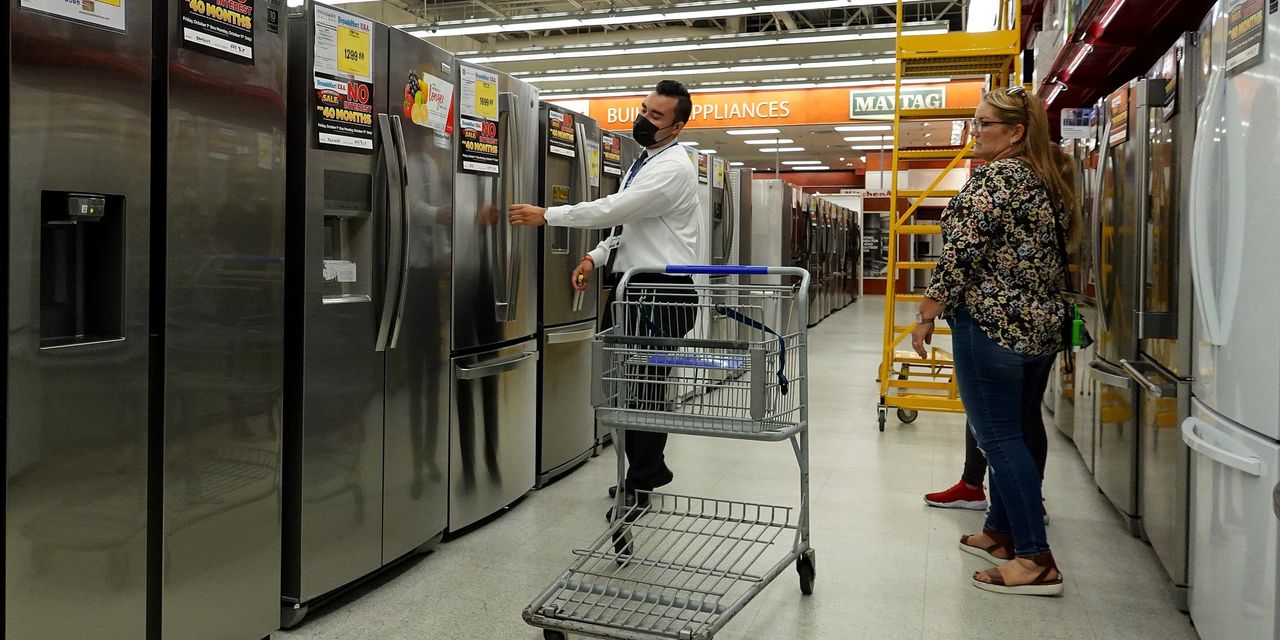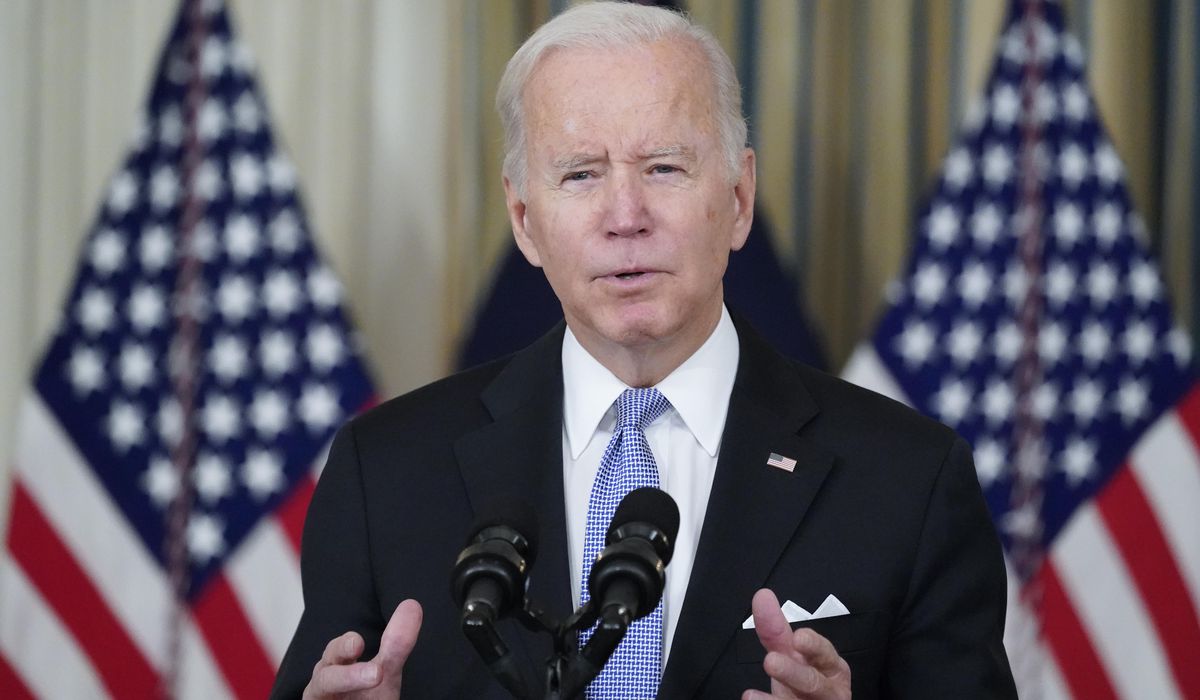
U.S. inflation reached a nearly four-decade high in November, as strong consumer demand collided with pandemic-related supply constraints.
The Labor Department said the consumer-price index—which measures what consumers pay for goods and services—rose 6.8% in November from the same month a year ago. That was the fastest pace since 1982 and the sixth straight month in which inflation topped 5%.
The so-called core price index, which excludes the often-volatile categories of food and energy, climbed 4.9% in November from a year earlier. That was a sharper increase than October’s 4.6% rise, and the highest rate since 1991.
The increase in prices for new vehicles, which came in at 11.1% in November, was the largest on record, as were those for men’s apparel and living room, kitchen and dining room furniture. A 7.9% surge in fast-food restaurant prices last month marked the sharpest on record too.
The steady rise in restaurant prices during the past few months is a sign of pass-through from wages into higher prices, economists say. That dynamic is increasingly showing up in other industries. Wages tracked by the Atlanta Fed climbed 4.3% in November, up from 4.1% in October and the highest since 2007.
Some energy prices showed signs of easing—in part because of fear in the financial markets that the Omicron variant of Covid-19 could slow growth. But gasoline rose at a 6.1% monthly rate for the second straight month.
The November prices trend came before the emergence of the Omicron variant, which poses a new threat from a pandemic that is well into its second year. But the sharp price increases are the result of a booming economy that has developed imbalances in supply and demand as the U.S. continues to recover from the pandemic.
“We have tremendous spending by consumers. A lot of people are getting hired. Demand is huge,” Allen Sinai, chief global economist and strategist at Decision Economics, Inc. said. He added that higher-than-expected inflation implies a needed pullback in fiscal and monetary stimulus. “Even after doing that, the economy should still be in super shape producing growth rates and earnings not seen in decades.”
On a monthly basis, the CPI increased a seasonally adjusted 0.8% in November from the prior month, about the same as October’s 0.9% increase.
The latest strong inflation report strengthens the case for Federal Reserve officials to commit to hastening the wind-down of their stimulus efforts, paving the way to raise interest rates in the spring to curb inflation.
“I think the Fed already got ahead of today’s data by pre-announcing that they will accelerate the taper next week,” said Aneta Markowska, chief financial economist at Jefferies LLC.
Stocks and oil prices gained and government bond yields fell after the inflation figures reinforced expectations that the economy should slow gradually next year as the Fed tightens monetary policy.
Unlike in past recoveries, strong demand for goods such as autos, furniture and appliances has driven much of the inflation surge. Prices for services—such as for travel and recreation—have generally climbed much less with softer demand. The holiday season is likely exacerbating these dynamics, Ms. Markowska said, adding the supply and demand imbalance will continue to widen.
A shortage of available workers is also affecting inflation and the overall economy, pushing companies to raise prices to offset higher labor costs. Companies are setting aside an average 3.9% of total payroll for wage increases next year, the most since 2008, according to a survey by the Conference Board, a private research group.
Tip Hongchindaget said that while demand at her Charlotte, N.C., restaurant is booming, higher costs and scarce labor are squeezing her business. A surge in chicken prices has wiped out what used to be a reliable source of profit for her restaurant, Rice & Spice Thai Street Food. And though sales are strong, the dearth of workers has prompted her to start closing for Sunday lunch.
“It has happened like a storm, and it just keeps coming,” she said. “I don’t think we can keep giving more people higher wages.”
Ms. Tip said she is now researching technological upgrades that might require less labor. She is reluctant to increase prices after having done so earlier this year, especially since the area’s other Asian restaurants haven’t raised prices much. “If we raise the price again this time, I’m pretty sure it’s going to impact” sales, she said.
On Thursday Costco Wholesale Corp. said its prices likely grew between 4.5% to 5% during the most recent quarter, a bit higher than the company predicted the previous quarter. “I think it’s going to continue,” said Costco Chief Financial Officer Richard Galanti on a call to discuss earnings. “Hopefully, we’re getting towards the top and it’ll start flattening out and subsiding, but we’ll see.”
Hormel Foods Corp. , maker of Spam and Skippy peanut butter, said on Thursday that it raised prices on many of its different pantry staples, citing sharply higher costs. The Minnesota-based company said it raised the price of its Jennie-O turkey, for example, to counter higher feed costs and labor shortages. “In 2022, we anticipate pork, beef, turkey and feed prices to remain above historical levels,” said chief financial officer James Sheehan on a call with analysts.
Sixty percent of small-business owners said they had increased prices in the previous 90 days, according to a November survey of more than 560 small businesses for The Wall Street Journal by Vistage Worldwide Inc., a business-coaching and peer-advisory firm. Eighty percent of the companies surveyed reported increased labor costs, while 72% said their suppliers had raised prices.
Companies are still struggling to get materials, though supply constraints were showing signs of easing before the Omicron variant emerged. The most prominent example of strained supply chains is a shortage of semiconductors that has hamstrung auto production.
Economists generally see inflationary pressure from supply constraints easing in 2022 as sidelined workers return, consumer demand for goods cools and production ramps up. However, they also expect those to be replaced by more persistent sources of price pressure such as rent and medical care.
Aichi Amemiya, senior U.S. economist at Nomura Securities, said a continuing shift in consumer spending from goods to services should also help calm inflation. Signs of improving transportation costs and auto production hint that inflationary pressure could begin easing early next year, though it is likely to remain high in December, Mr. Amemiya said.
Covid-19 continues to be a wild-card factor. Past virus surges have put downward pressure on prices for travel, recreation and other services that involve in-person interaction. However, a resurgence of cases ultimately could push inflation higher by increasing consumer demand for goods and triggering shutdowns of factories and ports, Mr. Amemiya said.
Persistently elevated inflation is hitting consumer budgets.
Dallas resident Greg Chu noticed a rise in his gasoline costs earlier this year—an increase so sharp that he said he took his car to a mechanic. But there was nothing wrong with his car: The problem was much higher gas prices. The 27-year-old has taken to meticulously planning his day to reduce driving. Since food prices began rising last spring, he also is dining out less and is buying less meat and dairy at the grocery store.
“Inflation has changed how I drive, shop and eat,” said Mr. Chu, who works as an accountant. “I can afford to pay these price increases, but at the cost of reducing my other expenses or savings, which I am not willing to do.”
—Sarah Nassauer and Patrick Thomas contributed to this article.
Write to Gwynn Guilford at [email protected]
Copyright ©2021 Dow Jones & Company, Inc. All Rights Reserved. 87990cbe856818d5eddac44c7b1cdeb8








